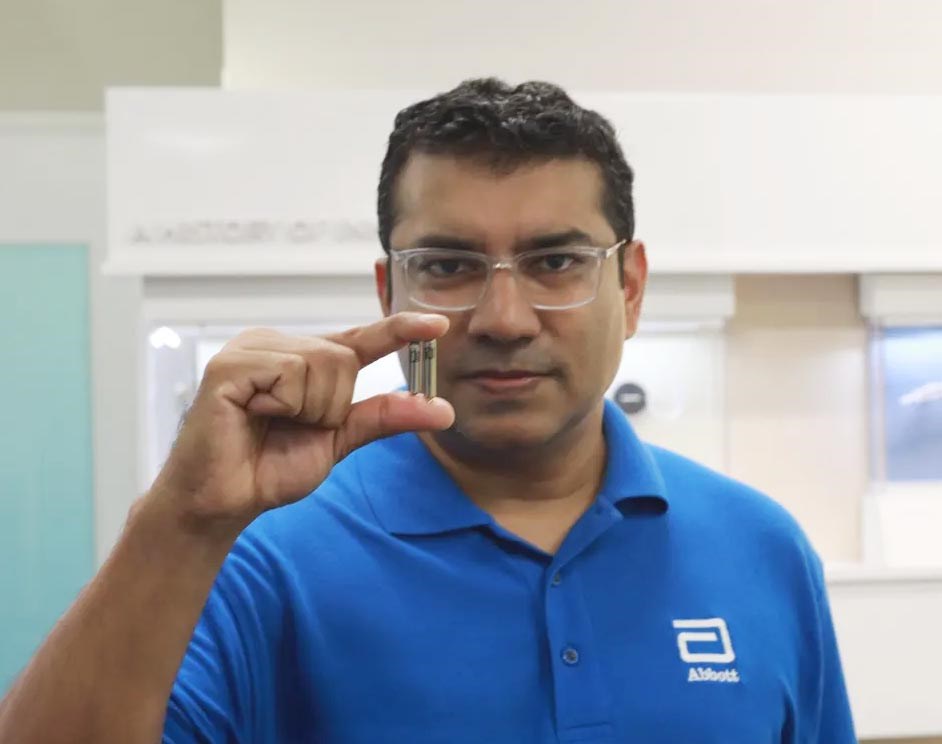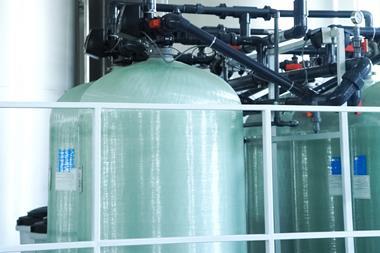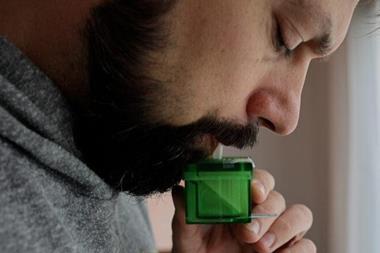
Source: Abbott
Vish Charan, Abbott VP of product development
A novel design of pacemaker – called Aveir DR – for use on two chambers of the heart without the need for wires, has been approved by the FDA. The device, made by Abbott, is set to be suitable for use in almost any patient that requires a pacemaker. The wireless device is smaller, than traditional implantable pacemakers, making it minimally invasive.
The pacemaker requires no wires to be connected to the heart and therefore no surgical implantation. The pacemaker is instead injected into the heart using a catheter in a way that allows for removal if necessary.
Around 80% of cardiology patients need shocks in two chambers of the heart to maintain a normal sinus rhythm. The new device requires synchronisation so electric shocks can be delivered to both chambers at the same time.
Calibration of the device using solutions like Bluetooth were ruled-out due to the risk of battery depletion which could limits the device’s lifespan. However, engineers at Abbott developed a propriety system – called “i2i” – which allows for communication with the pacemaker by transmitting high frequency electric pulses taking advantage of the electric conductivity properties of the patient’s blood.
Leonard Ganz, a cardiologist and Abbott’s chief medical officer for cardiac rhythm management, said: “we know that leadless [free-of-wires] pacing offers a number of important advantages to patients in terms of getting away from complications related to traditional pacemakers.”
Indeed, requiring no operation to implant the device minimises the associated risk of infection usually associated with the traditional pacemaker.
Abbott conducted a clinical trial in which 295 patients were implanted with the device. More than 97% of patients had both chambers beating normally after three months post-implant, which exceeded the study goal of 82%.
Vivek Reddy, an author of the study, said that the pacemaker is ‘very safe’ as there was only one patient in the trial that experienced a serious complication. Reddy highlights that the pacemaker does not limit a patient’s life, as the recovery time from the delivery procedure is quick and with no scars.
Further reading:
https://www.accessdata.fda.gov/cdrh_docs/pdf15/P150035b.pdf
https://classic.clinicaltrials.gov/ct2/show/NCT05252702
https://www.bloomberg.com/press-releases/2023-07-05/abbott-receives-fda-approval-for-world-s-first-dual-chamber-leadless-pacemaker


























No comments yet